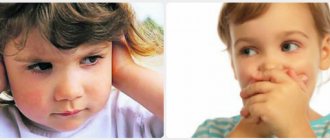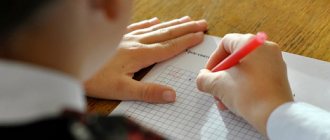What is aphasia?
The Latin term aphasia in medical terminology refers to a neurological disease associated with a disorder of part of the cognitive functions of the human body. The cognitive functions of the human brain include: speech, memory, drawing and writing, understanding or awareness, orientation in space and time, as well as attention and praxis. In aphasia, functions such as speech, writing, and the perception of auditory and, in some cases, visual information are significantly affected.
Aphasia and Alexia
Aphasia should not be confused with alexia. These are two completely different terms. Alexia occurs as a congenital defect of the child’s speech apparatus, thus the child initially does not develop speech and its perception is significantly difficult. In contrast to alexia, with aphasia the victim’s speech was already formed. Thus, aphasia is always an acquired disease, while alexia is a primary lesion of the speech centers.
Aphasia occurs as a result of organic damage to the neurons of the speech center located in the cerebral cortex. Speech disorder leads to the formation of persistent social and psychological maladjustment of the victim, since contact with the outside world is greatly hampered. Aphasia is manifested by such symptoms as: severe impairment of speech function, impoverishment of vocabulary, primarily in the native language. The victim can no longer consciously construct sentences, as well as perceive someone else's oral or written speech.
Symptoms
Clinical manifestations of sensory aphasia have a number of specific signs that help make a quick and effective differential diagnosis. These signs include:
- Fluent speech or logorrhea, replete with a large number of allegorical expressions and paraphrases. The patient misses nouns, and I compensate for such speech defects with a large number of verbs, prepositions and conjunctions. Speech becomes verbose, but uninformative.
- “Jargnonic aphasia” is a continuous stream of neologisms, proverbs, sayings and paraphrases.
- Strong excitement up to the development of a paranoid state.
- Impaired understanding and perception of speech. The patient has difficulty or does not perceive simple questions at all, for example, a request to introduce himself or say who he is, but is able to follow simple commands, for example, turn his head or introduce himself. It is also important to note that the patient does not understand his own problem and becomes very irritated when the interlocutor does not perceive his speech well.
- Right-sided hemianopsia or upper quadrant hemianopsia. Loss of visual fields - when reading books, the victim will completely not notice the left page when reading the text.
- Smoothing of the nasolabial fold - the face becomes like a mask.
- Impairment of written speech.
There is also pure sensory aphasia (subcortical), when only the understanding of oral speech is impaired, but the understanding of written information, and therefore what is read, is preserved. Another form is also distinguished - transcortical sensory aphasia, which is characterized by the preservation of the ability to repeat oral speech, despite the lack of its perception and understanding. The main problem is that the patient hears the address to himself, but cannot interpret the meaning of what the interlocutor said. The native language is perceived as if it were foreign.
Sensory aphasia in rare cases occurs as an independent lesion of the auditory zones located in the brain, since in almost 85% of cases the damage involves several areas of the brain responsible for a wide variety of functions of the victim’s body. For example, with a stroke, sensory aphasia is often combined with paresis or paralysis of skeletal muscles on the side opposite the lesion. In the case of an infectious-inflammatory process: abscess, meningitis, encephalitis, there will be signs of general intoxication of the body and febrile syndrome, as well as cerebral symptoms. In the case of encephalitis, specific changes will be added to the cerebrospinal fluid - cerebrospinal fluid.
Specific signs of sensory aphasia in children
Sensory aphasia in childhood can be confused with alalia - the primary absence of speech, but there is a difference: if with alalia speech does not shift from the initial level of development, i.e. does not progress and does not undergo regression, then with aphasia a sharp degradation in the development of speech function, which has already been formed in a person, is noticeable. Since in childhood the speech function is not yet fully formed, there are specific signs for aphasia:
- As a rule, there is a rapid development of the disease and rapid recovery of speech function. Lack of recovery progress over several weeks is a poor prognostic sign for further recovery and indicates more serious brain damage.
- Restoration of speech function is carried out by increasing the activity of neighboring areas of the cortex, which to some extent are able to compensate for the neurological deficit. In adults, the restoration of speech function is carried out due to the formation of new logical connections and a developed conceptual apparatus.
- Scanty symptoms. Very often, it is difficult to determine the specific type of aphasia in children, since their speech function is not sufficiently developed. As a result, the conditions for revealing the full clinical picture of sensory aphasia are not created.
How does the human speech apparatus function?
The communicative characteristics of people are directly related to the formation of the second signaling system or speech apparatus. All human achievements are primarily associated with the progressive development of communication abilities, which allowed people to actively exchange accumulated information and interact together.
It is important to note that the human brain synthesizes and perceives speech thanks to developed speech centers. Both speech centers are located in the cerebral cortex and are named after the researchers who discovered them.
- Broca's speech area is a speech-motor or simply motor center responsible for the formation of human oral speech. This center is responsible for motor function: the phonological and syntactic structure of speech coming from a person. The motor center is a kind of verbal analyzer and is responsible for the work of the facial muscles and tongue.
- Wernicke's speech center is a center responsible for the analysis and perception of incoming speech information from the outside. Wernicke's area has an anatomical localization in the temporal gyrus and is usually located in one dominant hemisphere. In addition to processing incoming speech information, the Wernicke Center also provides intonation characteristics of outgoing speech.
Despite the anatomical separation of the two speech zones listed above, they constantly interact with each other and work harmoniously as a single whole. Perception and analysis of incoming information, further interpretation of the received data and the formation of a response are the most important functions that formed the second reflex signaling system of a person.
Etiological factors of aphasia
The cause of the development of such a cognitive disorder as aphasia can be a variety of factors, both external and internal to a person’s environment. However, most often internal factors lead to the development of aphasia. The most common etiological factors in the development of aphasia include:
- Traumatic brain injury. One of the most common external factors. Aphasia can occur during a traffic accident or during a fight, when the victim's brain tissue experiences significant kinetic energy. A concussion of the brain can lead to bruise of its tissues as a result of a hydrodynamic shock or to the development of rupture of cerebral vessels or vessels of the arachnoid membrane.
- Acute cerebrovascular accident or stroke. The most common cause of aphasia. In most cases, stroke occurs as a result of damage to the cardiovascular system, which leads to ischemic damage to the brain. If the thrombus is localized at the level of the middle cerebral artery, then the speech center is damaged and motor aphasia develops. Predisposing components of vascular diseases also include: hypertension, dyslepidemic blood disorders, atherosclerosis and metabolic disorders.
- Oncological diseases. In the structure of the causes of aphasia, they are also often found. Aphasia in this case occurs when the speech center is damaged by a tumor or when the latter is compressed by a benign tumor.
- Infectious and inflammatory diseases. This etiological cause is most often found in children and young people, since they are more susceptible to generalized infectious processes. Meningitis and encephalitis can lead to aphasia.
In more rare cases, the cause is chronic degenerative diseases of the nervous system such as Alzheimer's and Pick's disease, which can also affect the speech areas of the cerebral hemispheres.
Let's understand the reasons
The diagnosis is made by a neurologist, but a mandatory component of the diagnosis is a consultation with a speech therapist. He must establish to what extent various functions are preserved or, conversely, lost: understanding speech, diction, writing, counting. The doctor pays attention to the patient’s general condition and reflexes.
A consultation with a child psychiatrist may also be required. This specialist will determine whether the patient’s condition is associated with mental disorders and whether his nervous system requires medication support to achieve the best results.
A consultation with a psychologist completes the diagnosis. His task is to understand whether help is needed in adapting to his condition and whether the child needs support to actively participate in rehabilitation activities.
Classification of types of aphasia
In clinical neurological practice, it is customary to distinguish the following types of aphasia:
- Dynamic, occurs with organic damage to the posterior areas of the frontal lobes. It manifests itself as a violation of the utterance program, which leads to both a violation of speech perception and a violation of its formation.
- Acoustic-gnostic, manifested by damage to Wernicke's analytical area. Characterized by loss of phonemic hearing. A person with this form ceases to adequately perceive the interlocutor’s speech;
- Acoustic-mnestic, manifestation is a violation of the visual representation of an object and loss of auditory memory. Such aphasia is manifested by impoverishment of speech, omission of parts of speech and the presence of paraphrased speech errors;
- Amnestic-semantic, with damage to the posterior temporal parts of the brain. Understanding of complex grammatical structures is impaired, simple speech is not affected;
- Efferent motor aphasia manifests itself when Broca’s area is damaged, and the patient develops articulatory speech defects or apraxia;
- Afferent motor aphasia develops with damage to the postcentral sulcus. The main disorder in this form is a kinetic speech disorder or severe difficulty in speech function associated with the formation of specific sounds. The patient also has a disturbance in the perception of speech information when reading and writing.
Remember all!
Disturbances in amnestic aphasia require coordinated work of a team of doctors and defectologists. The baby’s family also needs to get involved. The main thing is to do it right. After all, the task is to build new connections to replace the lost ones, which means that you won’t achieve much by simple repetition. The image of an object is made up of a set of factors, and the task of adults is to connect as many of the child’s sensations as possible. Is the baby unable to remember the word “spoon” because the connection between the visual image and the name of the object is broken? It doesn’t matter, because you can use a spoon:
- touch,
- twirl in your hands
- lick
- listen to her fall to the floor
- smell.
One of the familiar sensations may well turn out to be the key to a forgotten word and will tell specialists possible ways of rehabilitation. The child’s brain is plastic, and when the cause of forgetting words is eliminated, it builds up new connections quite quickly. Especially if you give it support in the form of a dosed load, which will stimulate the activity of various zones.
Clinical picture
Aphasia is characterized by a variety of disorders that manifest themselves more or less actively depending on the clinical form of aphasia. The most common manifestations of aphasia are the following symptoms:
- The patient misses phrases and individual words, most often nouns;
- Repetition of the same phrases or phrases;
- Slow speech of the victim, with pronounced intervals between sentences, or vice versa, the victim’s speech becomes fluent, illogical, turning into “porridge”;
- The presence of paraphrases is a descriptive characteristic of the semantic load of a word. Speech becomes descriptive;
- A person suffering from aphasia cannot remember the name of the object or object in question, but knows its function and appearance.
- The victim's speech becomes expressive and contains a large number of verbs.
It is important to note that the patient most often easily remembers the name of an object when prompted or in context, for example, if you name the first syllable of the desired word, the patient will easily remember its ending.
Knew, but forgot
Amnestic aphasia is characterized by the inability to use long-known words. The person has preserved hearing and intelligence, he understands what is said well and speaks clearly himself, but there are frequent pauses in his speech. He replaces words with inappropriate meanings, and sometimes with just invented ones. Sometimes it is possible to remember a word only with the help of loved ones or a speech therapist. The patient says: “This is what they eat”, he is upset that he cannot name the object, but after the first syllable “lo” he remembers: “Spoon!” The signs of amnestic aphasia resemble the stage of speech formation, when the child still has a poor active vocabulary. But the causes of the disease are completely different.
Differential diagnosis
Despite the fact that aphasia is a neurological disease, the approach to diagnosis is multidisciplinary. To accurately determine the clinical and morphological manifestations of the disease, it is necessary to fully conduct a diagnostic examination of the patient.
On the basis of the Clinical Institute of the Brain there is a powerful diagnostic department, which has all the necessary equipment and specialists in related fields, which ensures a high degree of information content of the diagnostic data provided.
Topical diagnosis plays the most important role in patient examination. This procedure is performed by a neurologist or neurosurgeon. To do this, all data from the history of the present disease are collected, special symptoms are determined, as well as a physical examination of the patient. Along with an examination by a neurologist, the victim should be examined by a psychotherapist to exclude or confirm mental disorders and establish the degree of social adaptation of the patient with aphasia. The degree of reliability of the data obtained largely depends on the qualifications of the specialist and his practical experience.
To diagnose aphasia, studies such as:
- Computed and magnetic resonance imaging. Both studies can be performed without contrast and with contrast. For visualization of soft tissues, it is more informative to conduct an MRI study.
- Plain radiography of the head and neck. X-rays are performed if there is a history of traumatic brain injury to confirm or exclude defects in hard tissues (cranium).
- Ultrasound examination – sonography and ultrasound color Doppler mapping of cervical (cervical) vessels. This ultrasound examination is performed to exclude damage to the vessels of the neck.
In addition to instrumental studies, an important component of a diagnostic examination is a set of laboratory tests. It is necessary to determine the patient’s blood type and Rh status, determine the lipid profile and general blood test.
Rehabilitation
Only daily classes with a speech therapist and other specialists will contribute to an active rehabilitation process. It is very important to correctly build a rehabilitation plan from simple to complex. To begin with, the victim must be adapted to new conditions. Only after a course of psychotherapy can one begin rehabilitation measures, since the patient must be motivated to recover.
The patient can also perform the following exercises at home:
- Simple questions: the patient is first asked questions with monosyllabic yes or no answers, then later they move on to open questions.
- Thematic dialogues are practiced with the gradual development of dialogue on specific topics;
- Writing and reading. Correction of the spelling and pronunciation of letters begins. Then syllables, which the patient then puts into words. In the future, with successful progress, they move on to writing dictations and reading short texts. The patient is asked to retell in his own words the story he read and answer questions about its content;
- A task aimed at matching pictures and text. The patient is asked to build a story, while laying out the pictures sequentially;
- Structuring pictures according to general properties and characteristics. The patient is given the task of arranging the pictures according to categories and highlighting common characteristics, for example, to separate some animals from others.
Therapeutic measures
In the treatment of aphasia, as with any other neurological pathology, the leading role is played by the possibility of using pathogenetically based therapy. Only after a fully completed diagnostic examination can targeted therapy be prescribed.
The first step, regardless of the form of aphasia, is to eliminate life-threatening factors. Intensive therapy measures are carried out, the patient is stabilized, and only after this the stage of aphasia treatment and subsequent rehabilitation begins.
In the treatment of aphasia, it is important to activate the metabolic imbalance that has arisen in the brain as quickly as possible. The following groups of drugs are used for this:
- Cerebroprotectors and nootropics: Piracetam, Nootropil, Cerebrolysin.
- Vascular drugs: Octavegin, Vinpocetine and analogues.
- B vitamins, natural antioxidants and neuroprotectors.
- Anticoagulants or coagulants, depending on the form of vascular lesion.
A very important point is the conduct of physiotherapeutic procedures. Therapeutic electrophoresis, magnetic therapy, acupuncture, therapeutic massage and physical exercise are used. All methods make it possible to increase the effectiveness of basic therapy and accelerate regenerative and reparative processes.
Treatment methods and exercise examples
Treatment for aphasia depends on its form. Initially, they try to eliminate the possible cause of the disease, for example, tumors, inflammation, hormonal imbalances, etc. Restoring speech in aphasia takes a long period. Complex therapy includes both drug treatment and speech therapy. Only under these conditions is it possible to qualitatively correct the patient’s speech dysfunctions.
How to treat aphasia? Recovery is aimed at restoring the patient’s ability to pronounce the sounds of their native speech. Some patients go from sound to speech, while others find it easier to first pronounce a whole word and then isolate the first sound from it and consolidate its articulation. Sometimes a “letter animates the sound,” that is, the sound is called after the letters corresponding to the given sound are shown.
Examples of exercises to restore speech understanding:
- Nod or show a negative gesture in response to the question: “Do you like milk?”, “Do you have juice on the table?”, “Are you sitting on a chair?”, “Are you lying on the bed?”;
- Follow the instructions: “Open your notebook!”, “Get a pencil from the table!”, “Clench your hand into a fist!”;
- Answer whether there could be such a situation: “The girl barely had water, the girl drank bread”;
- Show in the picture where the house is, and where the tom is, where the eye is, and where the classroom is, where the butterfly is, and where the wand is.
It is necessary to restore speech activity by working on pronunciation with the help of articulatory gymnastics. As a rule, the main work in treating the disease falls on the speech therapist. It is this specialist who can teach you how to correctly pronounce sounds, syllables and form phrases using special exercises.
The main task in the treatment of acoustic-mnestic aphasia is the restoration of auditory-verbal memory. Work is being done on expressive speech, visual memorization of objects and their names, and restoration of reading and writing functions.
Correction of aphasia in motor disorders is aimed at restoring the patient’s articulatory functions and phonemic hearing. The patient is taught to distinguish the meaning of prepositions, adverbs, and adjectives. The treatment method involves the use of synonyms and antonyms in the patient’s speech.
- “Are the words “take”, “grab”, “young”, “elderly”, “old” similar in meaning?
- Come up with sentences with the words “smart - stupid”, “cold - hot”;
- Explain the meaning of the proverbs “A scared crow is afraid of a bush”, “Chickens are counted in the fall”;
- Explain what the expressions “make a mess” and “eyes run wild” mean.
Correction of aphasia in semantic pathologies comes down to overcoming spatial impairments and restoring logical-grammatical connections. The patient is taught to compose complex and detailed sentences.
Examples of tasks for restoring the grammatical structure of speech:
- Answer whether this is correct: “the boy is eating porridge”, “the boy is eating porridge”;
- Correct the errors “the bus is standing in front of the stop”, he writes with a pencil”;
- Put in place “a pen on the book, a pen in the book, a pen under the book, a match in front of the box, a match on the box, a match behind the box”;
- Complete the task “raise your hands up”, “turn back”;
- Is it possible to say this: “The doll cried and the girl broke it.”
When treating any speech disorders, people around the patient, especially loved ones, need to speak calmly, clearly and clearly. Complex words and abstract concepts should be avoided. Speech should be simple, fairly slow, and phrases should be short.







